#Michel ocelot
Text

#movies#polls#kirikou and the sorceress#90s movies#michel ocelot#requested#have you seen this movie poll
408 notes
·
View notes
Text


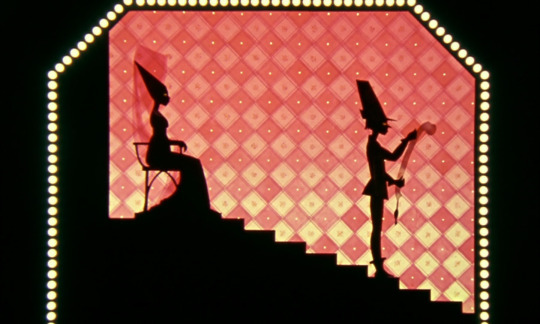




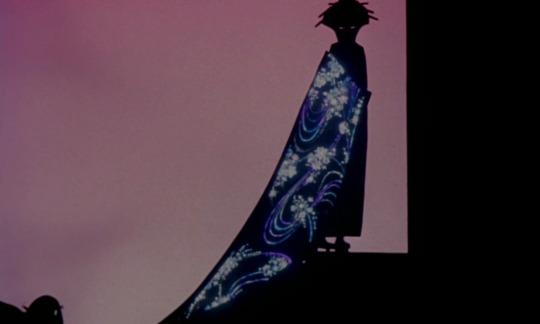
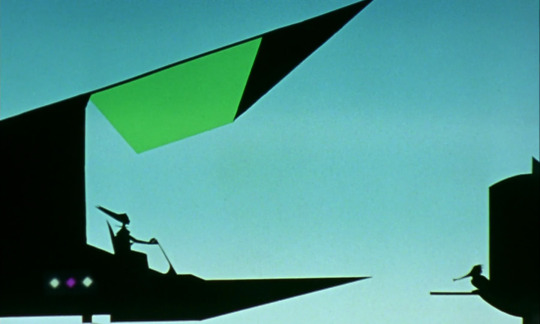

Princes and Princesses (2000) | dir. Michel Ocelot
#princes and princesses#princes et princesses#michel ocelot#films#movies#animation#scenery#screencaps
393 notes
·
View notes
Text
Fairytales in French cinema
Pictures from "Princes et Princesses", a 2000 animated fairytale movie by Michel Ocelot. This movie originally was a television series called "Ciné Si" and released in 1989, but Michel Ocelot later decided to compile six of the eight episodes into one full-length movie. This movie is an anthology of fairytales from around the world, retold in various settings ranging from fantasy to science-fiction. This movie (and the series before it) is most notable for actually being a shadow-puppet production, paying homage to the works of Lotte Reiniger.
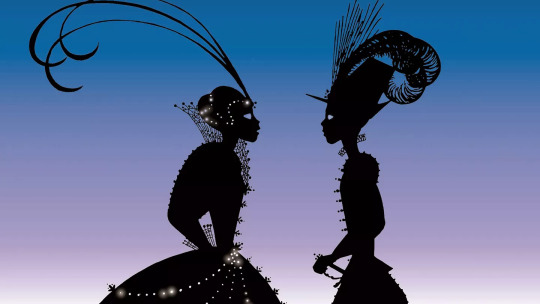


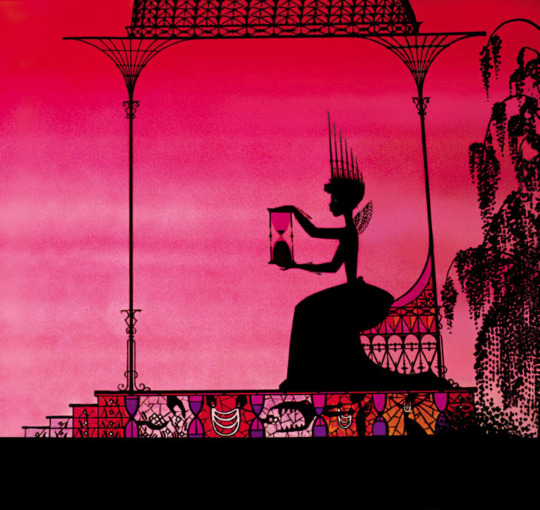



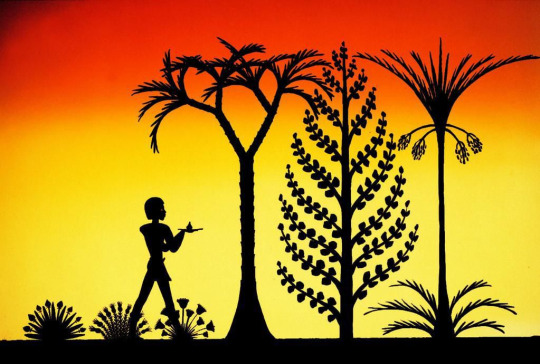

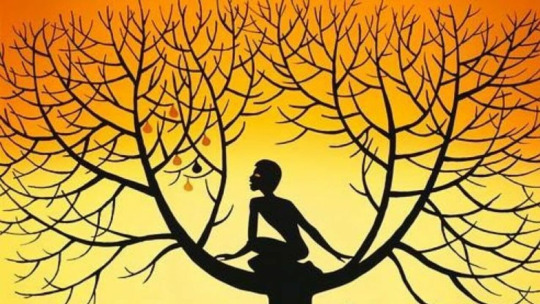
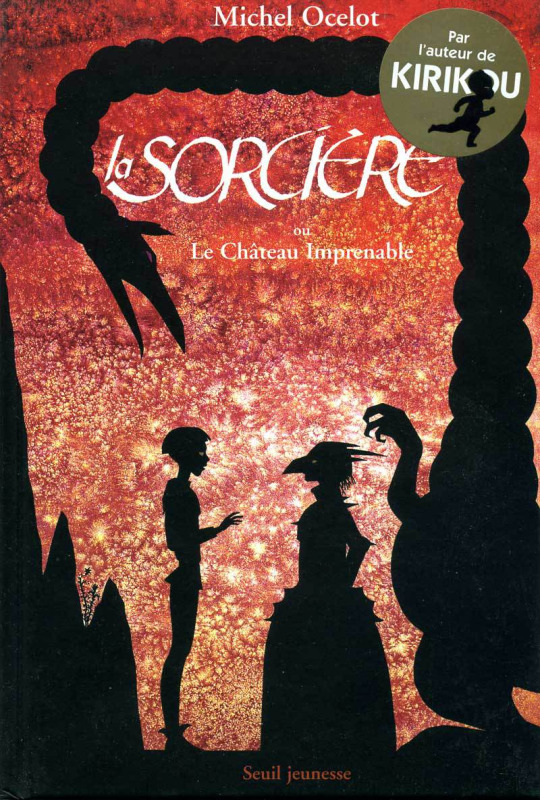
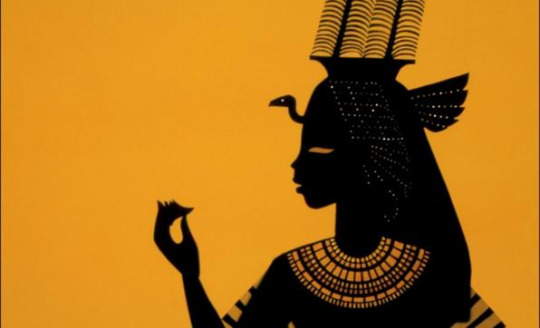
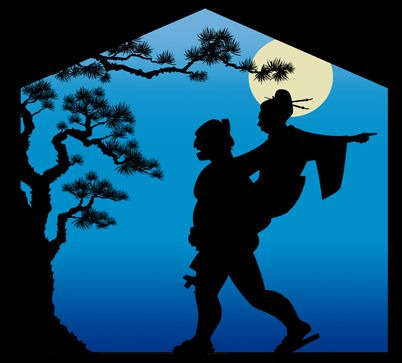

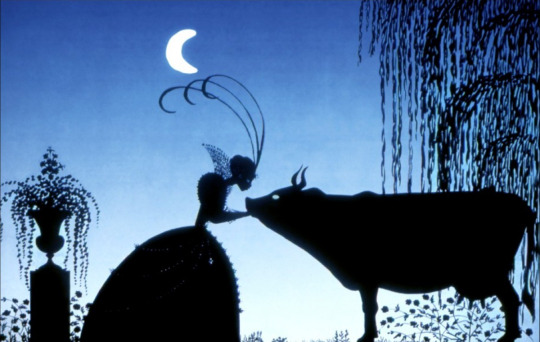

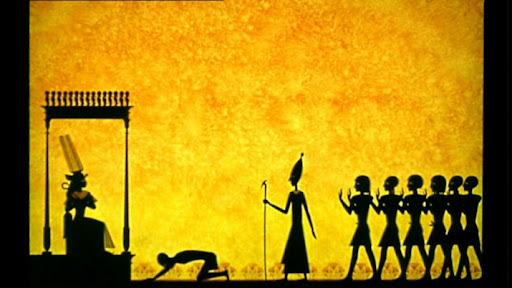

#lotte reiniger#michel ocelot#animated movie#fairytale movie#french movie#fairytales#shadow puppets#princes et princesses#fairytale aesthetic
41 notes
·
View notes
Text

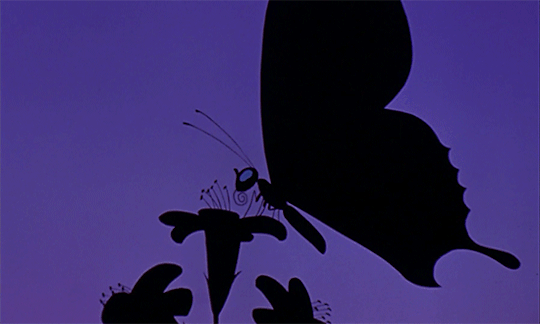
Princes and Princesses (2000)
199 notes
·
View notes
Text
Sorry not sorry but we, French people, have the best movies and the best movie-makers ever
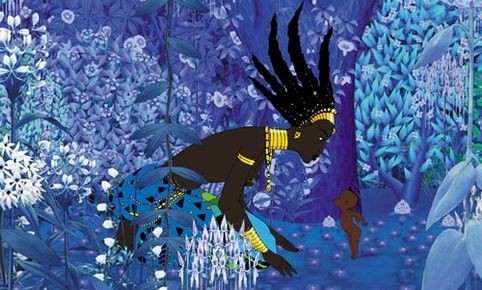
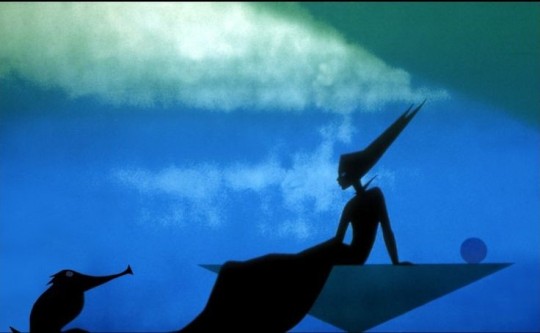

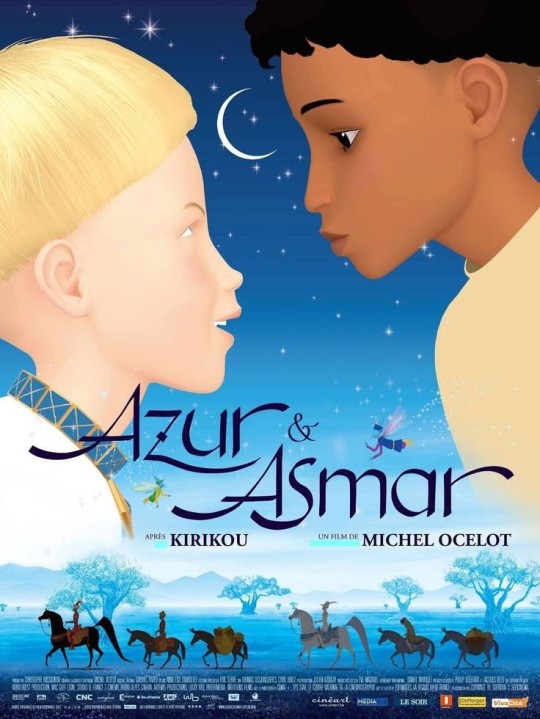
Kirikou et la sorcière
Princes et princesses
Dragons et princesses
Azur et Asmar
All of them by Michel Ocelot
And, obviously, THE movie that got THE Miyazaki inspired to do his:
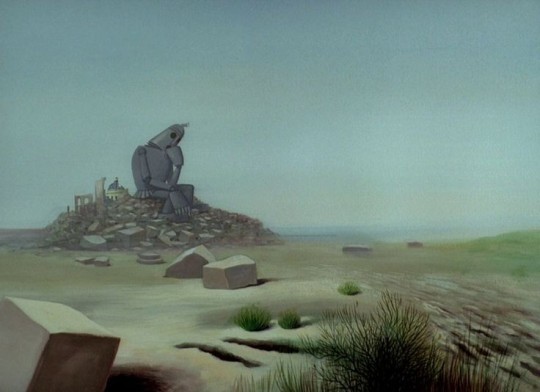
Le roi et l'oiseau, by Paul Grimault
This one is probably my favourite movie of ALL time.
Like.
It's brilliant.
I loved it when I was a child, I still love it now for different reasons. The double meanings are incredible, the animation is SO DAMN GOOD (and the film was released in 1980) (it took over 30 years to make because the production was a disaster but the result is... MASTERPIECE)
#Watch these#French movies#Michel Ocelot#the king and the mockingbird#Le roi et l'oiseau#Paul Grimault#Azur et Asmar#Princes et Princesses#Dragons et princesses#Kirikou et la sorcière#kirikou et les bêtes sauvages#Kirikou et les hommes et les femmea
38 notes
·
View notes
Text





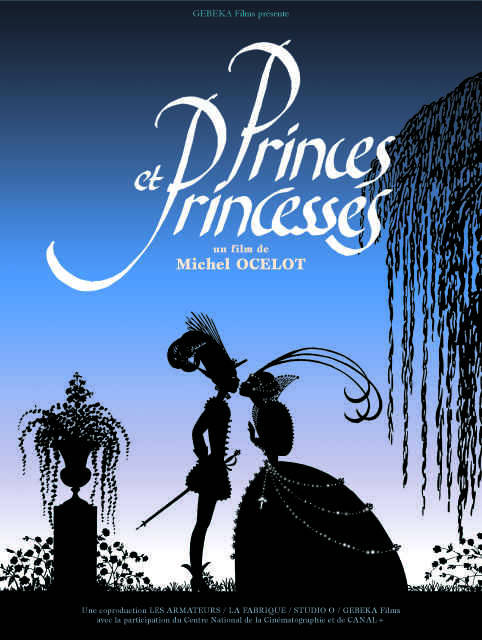
The 2000s were the golden age of French fantasy/fairytale animated films (think Prince of Egypt on a lower budget) and people are sitting on it and lamenting that Disney and Amazon can't do diversity well. (No shit). Spoilers in the links.
Kirikou et la Sorcière (Kirikou and the Sorceress), 1998 + its two sequels: inspired by West African storytelling and folktales, Kirikou is a young boy who can walk and talk since the womb and helps his people defeat the evil witch who has taken away all the men of the village. The sequels are more episodic tales focused on smaller issues Kirikou helps resolve with his ingenuity. It's got some banging songs by Senegalese star Youssou N'Dour, an almost exclusively pan-African voice cast (in the original French dub at least), and it explores some pretty dark issues without pulling any punches while managing to stay light-hearted. (It also has a lot of non-sexual nudity, which might be disconcerting if you're not expecting it.)
La Reine Soleil (The Sun Queen), 2007: essentially a Prince of Egypt rip-off but focused on Egyptian history and religion instead. It follows Ahkenaten and Nefertiti's daughter Ahkesa and her betrothed Prince Tuthankaten. The animation's not the greatest but it has some pretty impressive visuals here and there (although for the life of me I can't figure out why the royals have got otherworldly blue eyes). It's not as great as the others on the list but it's got the right vibes.
Azur et Asmar (Azur and Asmar: The Princes' Quest), 2006: by the same director as Kirikou. Azur is a rich young boy raised by an Arab nursemaid together with her young son Asmar. The three of them are separated, but an adult Azur eventually crosses the sea on a quest to find the Djinn fairy, and the two not-quite-brothers find themselves at odds. The early 3D animation is pretty funky but the backgrounds and the Morrocan architecture especially can be incredibly beautiful and detailed, and a lot of the movie is in classical Arabic (spoken by native speakers).
Les Enfants de la Pluie (The Rain Children), 2003: some very beautifully animated heroic fantasy with very nice worldbuilding and lore. It's not directly inspired by any one culture or fairytale but it's pretty far from the standard European fantasy worldbuilding that's been done to death. All the characters are non-human, with some big Atlantis vibes for the Hydross and a cool desert aesthetic for the Pyross. Sweet and short.
Princes et Princesses (Princes and Princesses), 1989, compiled in 2000: also by the guy who made Kirikou and Azur and Asmar. It's six short tales in handcrafted paper silhouette animation (inspired by Chinese-shadow puppetry), with three European-style fairy tales with some pretty imaginative visuals, and other tales from Japan, Egypt and even a sci-fi story 'from the year 3000'. As many female characters as male ones, and the female characters are all pretty awesome. The music can get hauntingly beautiful.
If you can get your hands on these, I definitely recommend giving them all a try!
#kirikou#kirikou et la sorcière#kirikou and the sorceress#michel ocelot#youssou ndour#princes et princesses#princes and princesses#azur and asmar#the princes' quest#azur et asmar#french animation#french culture#diversity#the sun queen#the rain children#ancient egypt#african culture#arab culture
1K notes
·
View notes
Photo


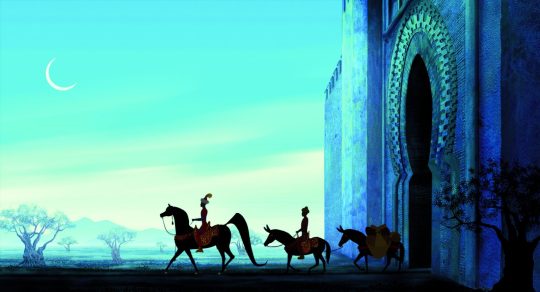




azur et asmar. michel ocelot.
314 notes
·
View notes
Text
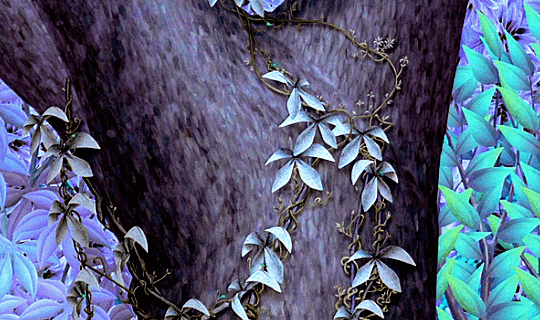
#kirikou et la sorcière#kirikou and the sorceress#Michel Ocelot#Ipomoea cairica#animationedit#filmedit#cartoonedit#nondisneyedit#movieedit#flowers#flowercore#cottagecore#animation#naturecore#french cinema#french animation#90s#1990s#edits*
83 notes
·
View notes
Text



Azur et Asmar - Michel Ocelot (2006)
#azur et asmar#michel ocelot#djinn#animation#3D#3D Animation#kirikou#kirikou and the sorceress#kirikou et la sorcière
3 notes
·
View notes
Photo

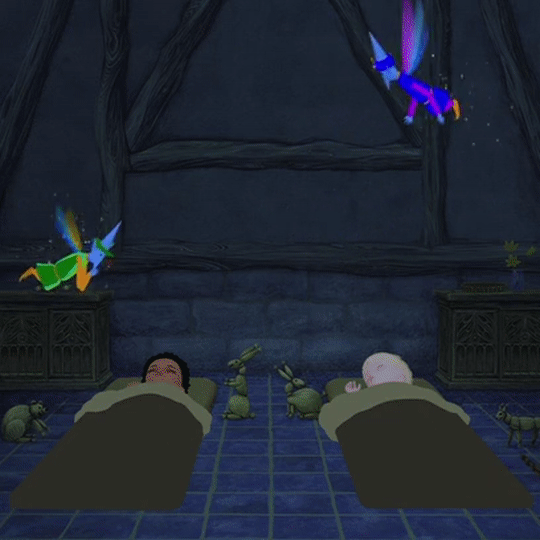

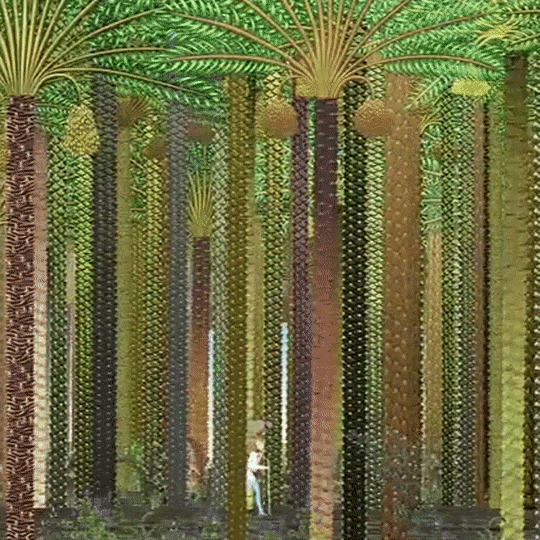

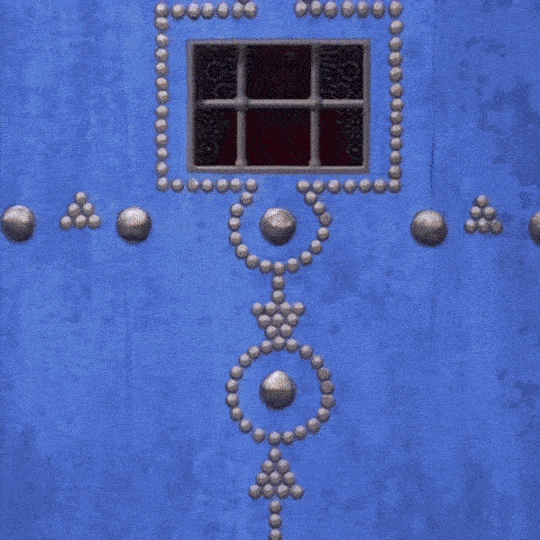
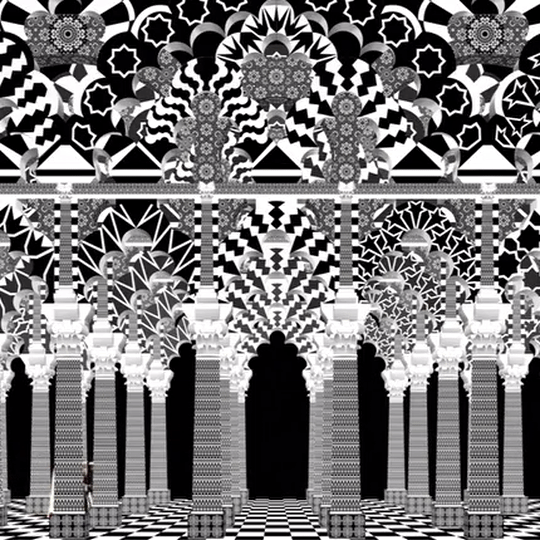


صبي صغير يصير كبير
A young boy will grow up
يقطع الوديان يطفي النيران
He will run through the valleys, he will put out the fires
وهو يخلص خورية الجان
He will save the jinns' fairy
معا يعيشان في حنان
And both will be happy
AZUR ET ASMAR (2006) dir. Michel Ocelot
#films#my gifs#azur et asmar#azur and asmar#michel ocelot#animation#france#mine#gifs#gifset#french cinema#this is a childhood favorite#watched at school like all the time along with kirikou#mwuah chefs kiss and all
220 notes
·
View notes
Video
youtube
Kirikou et la Sorcière | Film complet en Français | 1998 | HD
#youtube#kirikou et la sorcière#film complet en français#film complet#film movie#movie film#film#movie#michel ocelot#dk 75#dk75
3 notes
·
View notes
Video
youtube
Kirikou le film complet
#youtube#kirikou et la sorcière#film entier#film complet#film movie#movie film#film#movie#michel ocelot#blizzard m edits#blizzardm edits#bizzard m edits#bizarrdm edits#blizzard_m edits#bizzard_m edits
7 notes
·
View notes
Text
Fairytales in French cinema
Pictures from "Kirikou et la Sorcière" (Kirikou and the Witch/Sorceress) by Michel Ocelot.
The mid-20th century was marked by Cocteau's Beauty and the Beast... Jacques Demy's Donkeyskin left its print on the latter half of the 20th century... And Michel Ocelot's Kirikou burst out of the dawn of the 21st century. As I said before, this movie could be compared in term of scope, effect and popularity, to what The Lion King was in America... (except this movie's better :p)
Adapting a West African folktale while sharing modern messages about issues such as the power of tyrants or the nature of discrimination, using all sorts of traditional African artstyles for its design ranging from Ancient Egypt to the Benin, this movie enormous success (it even was adapted as a world-renowned live-action musical) completely redefined the animation industry in France in the early 21st century.
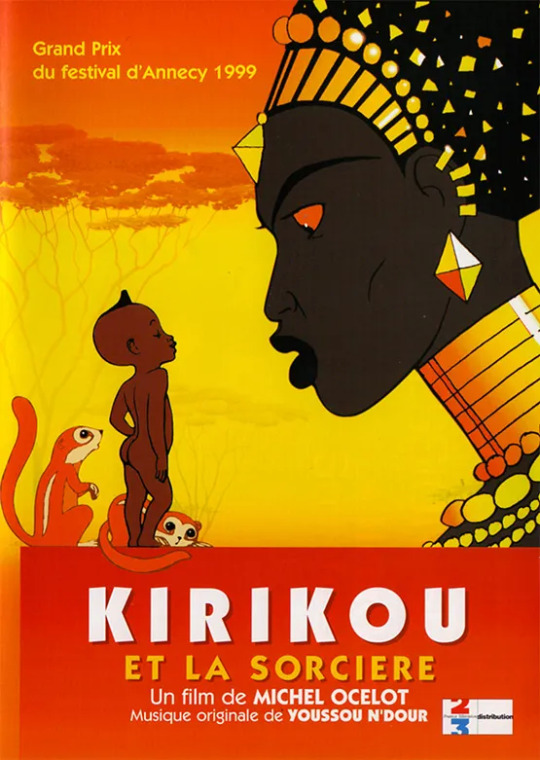


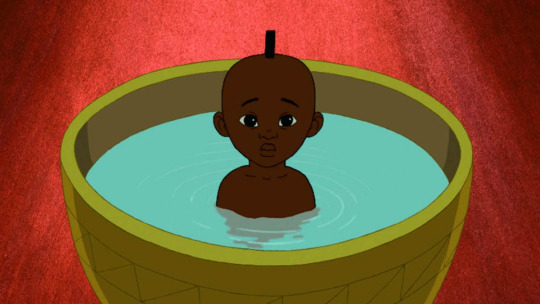
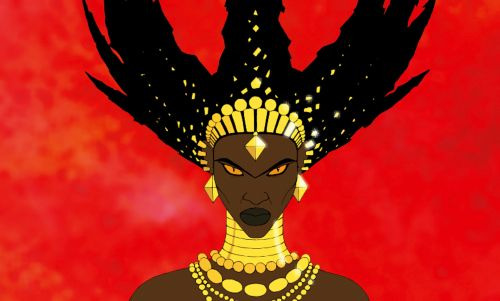

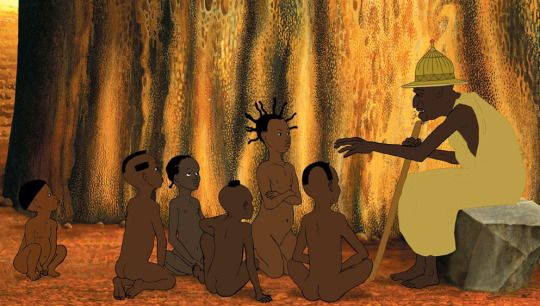



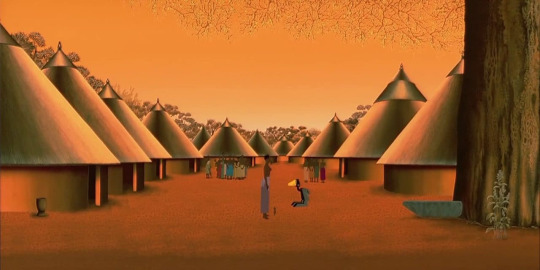
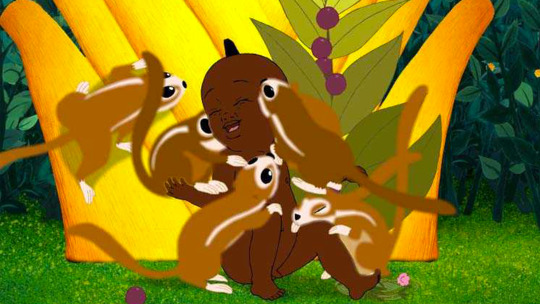

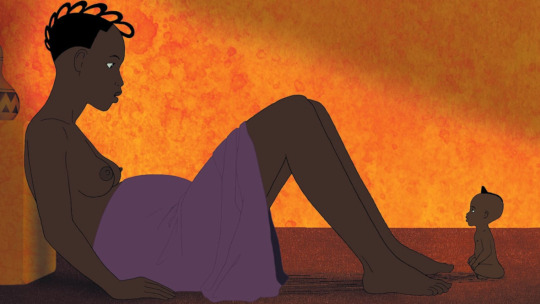
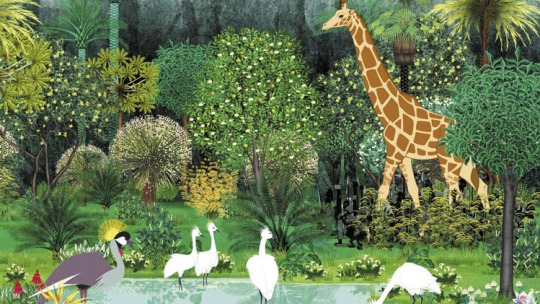
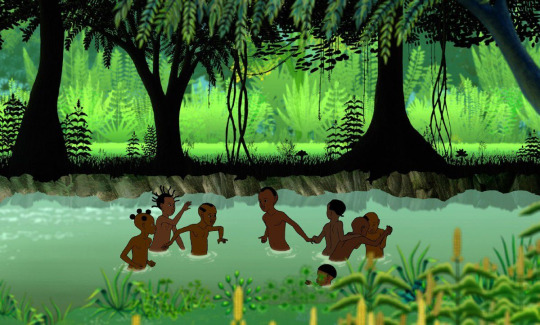







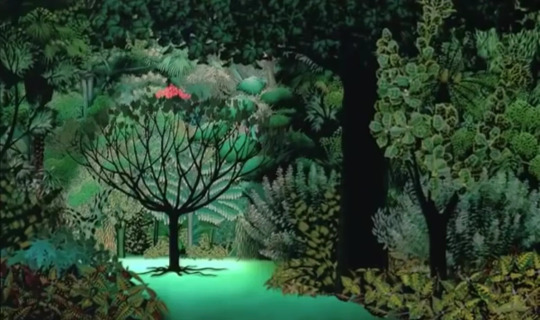
#kirikou#fairytale movie#kirikou and the sorceress#french movie#kirikou and the witch#animated movie#michel ocelot#african folktales#west african folktales
26 notes
·
View notes
Text
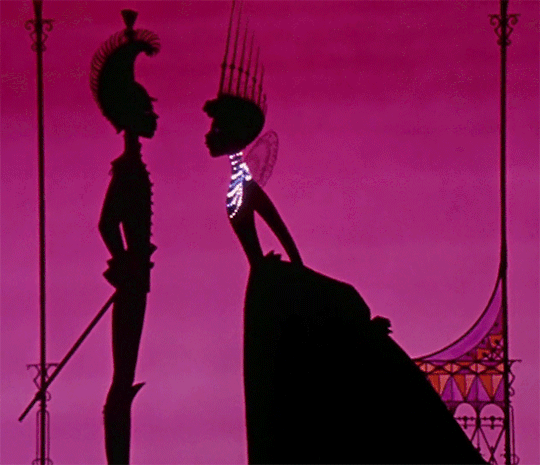
Princes and Princesses (2000)
#princes and princesses#princes et princesses#michel ocelot#princess#silhouette#animation#fairy tale#kiss#my gifs
173 notes
·
View notes
Text
Magical summer: Karaba
KARABA
Category: French children media / Fairytales of Western Africa
Michel Ocelot is one of the most famous French movie makers, specialized in animated movies for children. And he mostly got his fame through “Kirikou and the Witch”, an international success made by a Franco-Belgian-Luxemburg collaboration, but which found fame as far as the United-States. It was such a big success that it basically proved to everyone that a French animated movie could be a big thing oversea, and it even got adapted as a musical! Released in 1998, this animated movie was inspired by various folktales of Western Africa, and follows the adventures of the boy of the title, “Kirikou”. Born in a Western African village during a “mythical” time, Kirikou is a VERY unusual boy. He became able to talk when he was still in the belly of his mother, as soon as he was birthed he could walk, he is a very clever and cunning child, but he is also extremely small, small enough to sit in the palm of the hand of adults. As soon as he is born, he discovers that his village is under the terrible rule of a wicked witch named Karaba, and thus starts a conflict between the heroic little boy and the dreadful monster of a woman that is Karaba…
At the beginning of the story, Kirikou learns of the poor state of his village. The people are poor due to Karaba the witch regularly taking away their riches ; they have barely enough water for everyone because she dried up the village’s spring and so everyone has to take water from a far-away backwater ; and finally, the village doesn’t have any adult men in it anymore because they all tried to fight Karaba, and they all were eaten by her. Beyond an elderly man who acts as the patriarch of the community, there is only one other man, Kirikou’s own uncle, who leaves the village to go to Karaba’s house, in hope of vanquishing her. Kirikou forces his help on his uncle: he hides under the hat of his uncle in order to give him advices during his confrontation. Karaba turns out to be a beautiful but terrible woman who is served by an army of sentient fetish-statues. [Note: While the Internet turned “fetish” into an unpleasant term, originally a “fetish” was a sacred or magical statue of carved wood in African religions and rituals, destined to be inhabited by spirits or gods. Karaba has a very dark interpretation of the fetish-statues, as they are creepy-looking sentient statues acting like robots]. Thanks to Kirikou hiding in the hat and speaking to his uncle, Karaba believes the object is magical and she bargains with the warrior: she promises to leave the village alone in exchange of the “talking hat”. However, Kirikou escapes back with his uncle, and when Karaba discovers she was tricked her wrath is terrible.
As a revenge, she sends her fetish-statues to the village to order that all the women give her the last of their jewels and riches, truly depriving the community of their last precious things. (Karaba is a witch covered in jewels, and who apparently greatly love gold) One woman tries to hide a few jewels… but the statues search every house, and upon finding the hidden jewels, they burn the woman’s house. The fire can’t be put down because the village has no water. Later, Kirikou goes with the children of the village to the far-away backwater, and there Karaba tries to kidnap them twice. First she sends a beautiful pirogue, which turns out to be magical and take whoever enters it to Karaba’s house ; the second time she sends a beautiful, moving tree which ensnares in its branches all the kids that pass nearby before returning to Karaba’s house. But the two times Kirikou saves the children.
Realizing that the spring of the village being dried up causes a LOT of problems, Kirikou decides to solve the situation. Using his small size to enter the cliff from which the spring used to come from, he discovers that the “curse” of Karaba is actually a giant monster that drinks up all the water. Kirikou manages to kill it, and the spring flows once more.
Now, Kirikou has one specific character traits: he is a very curious boy, constantly asking questions. When he was born he just kept asking questions, such as where all the men where, or why the spring was dried up, and every time the answer was “Karaba”. But one of his questions never was answered: “Why is Karaba wicked?”. To that, no one can give him an answer… But his mother knows the only one who can tell Kirikou the answer he seeks. It is the “The Wise Man of the Mountain”, who happens to be Kirikou’s own grandfather – but he lives in the “Forbidden Mountain”, called as such because Karaba forbids anyone from going near it. The mountain is just behind Karaba’s house, and she has a “watcher statue” on her rooftop that keeps a constant surveillance. However Kirikou manages to sneak past Karaba’s house by using underground tunnels, and after many adventures he reaches the magical domain of the Wise Man of the Mountain, who answers all of Kirikou’s questions.
SPOILERS AHEAD!!!
You see, at this point we reach the last act of the movie. We reach the climax, the secrets revealed, the answer to all questions, so if you want to watch the movie by yourself I suggest you don’t go further.
SPOILERS ALERT! SPOILERS ALERT!
SPOILERS BEGIN HERE:
The Wise Man in the Mountain, who knows everything and holds all truths, reveals that if Karaba forbids anyone from reaching him, it is because she uses ignorance and lack of knowledge as her weapon: it is how she instills fear in the heart of people. Because Karaba is actually a very intelligent and cunning woman. She is a powerful magic-user, that is true, but she is actually less powerful than the villagers think. For example, the idea that she devoured all the men that tried to fight her? It is a lie. Karaba is not an ogress nor a cannibal. But she did defeat all the men in the village: she turned them into the fetish statues that serve her faithfully. As for the dried-up spring, it actually never was her doing. The monster inside the spring is just a random beast that dried up the spring by being too gluttonous, it was never sent by Karaba. But she took credit for it and pretended to have cursed the spring. Again, she needs people to fear her, and she manipulates them into believing her to be an all-powerful monster.
As for why Karaba is wicked, the answer is actually quite tragic. As the Wise Man reveals, Karaba once was a kind woman. But, as he stressed out, she was intelligent and powerful… And the men of the community she came from did not like women intelligent or powerful. They feared her, hated her, and one day they decided to “punish” her for being better than them: they took a poisonous thorn and plunged it in her back. It was located in a place where she couldn’t take it off herself, and the constant pain it caused her turned her wicked and made her powers evil. As the Wise Man reveals, if one were to take off the thorn that torments Karaba, she would be good again and all her curses would break.
This is the last mission of Kirikou: to save Karaba the witch from her own evilness. He sneaks into her house by underground tunnels, steals all the jewels she took away from the village, and hid them (quite clumsily) in the forest, all while leaving obvious traces of his passage. Karaba, enraged and determined to kill once for all Kirikou, sends a poisonous viper to kill him, but the miniature boy tricks the beast. So Karaba takes a poisonous spear and goes out to find her jewels and kill Kirikou herself. But as she digs in the earth to find back the hidden jewels, Kirikou jumps on her back and removes the thorn. This stops the constant pain of Karaba, she returns to being a kind and gentle woman, and all of her curses and evil magic as undone.
Kirikou then returns with Karaba and all the men (now free from the fetish spell) to the village, where they are welcomed – and it is a happy ending.
- - -
As you can see by the ending of the story, "Kirikou and the Witch" isn't just a retelling of traditional fairytales. It is also a deep movie that sneaks important issues and topic in a way children can understand. It speaks of the dark power of ignorance, of the importance of curiosity and knowledge, and it deconstructs the archetype of the wicked witch by highlighting the oppression and abuse women did suffer from. This is why this movie was so beloved, appreciated by adults and children together, with many people reinterpreting it in many different ways.
The movie was such a success the studios kept asking for sequels, but Michel Ocelot at first refused. He had conceived a full story, with a beginning and an end, it was a complete tale and he couldn't stretch it further. However he did create few stories that actually take place during the movie's stories - tales of past victories of Kirikou against Karaba, or of various heroic feats he did for the village. At first they were just children books, but they quickly were turned into a sequel (well "sidequel") movie, "Kirikou and the Wild Beasts". Finally the Kirikou movie were closed by a third film making it a complete trilogy, another sidequel called "Kirikou and the Men and Women", released in 2012.
16 notes
·
View notes
Video
youtube
Kirikou et la sorcière film complet (film entier)
#youtube#kirikou et la sorcière#kirikou et la sorciere#film movie#movie film#film#movie#film entier#r factory studio#michel ocelot
9 notes
·
View notes